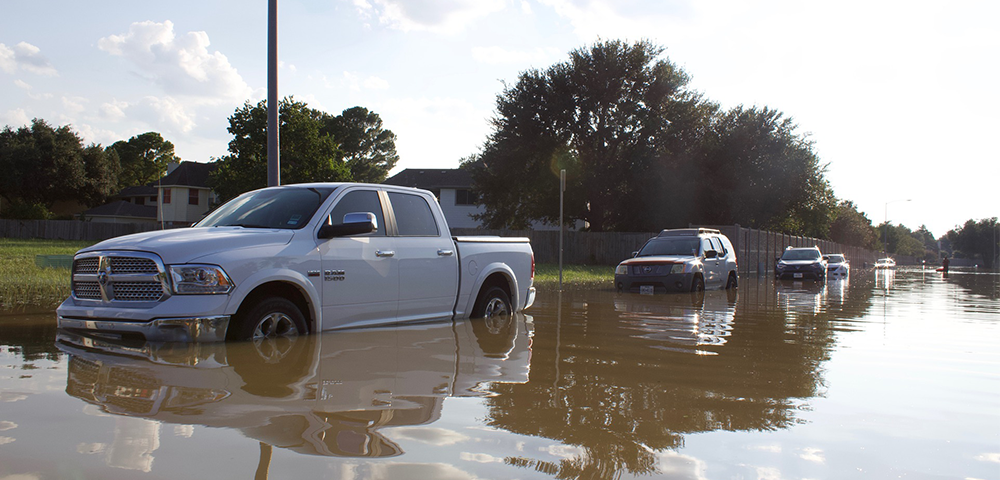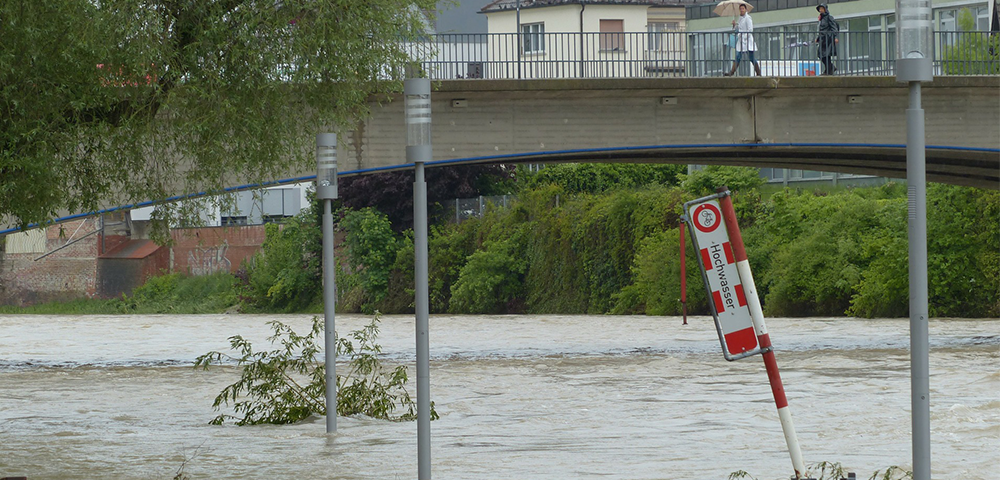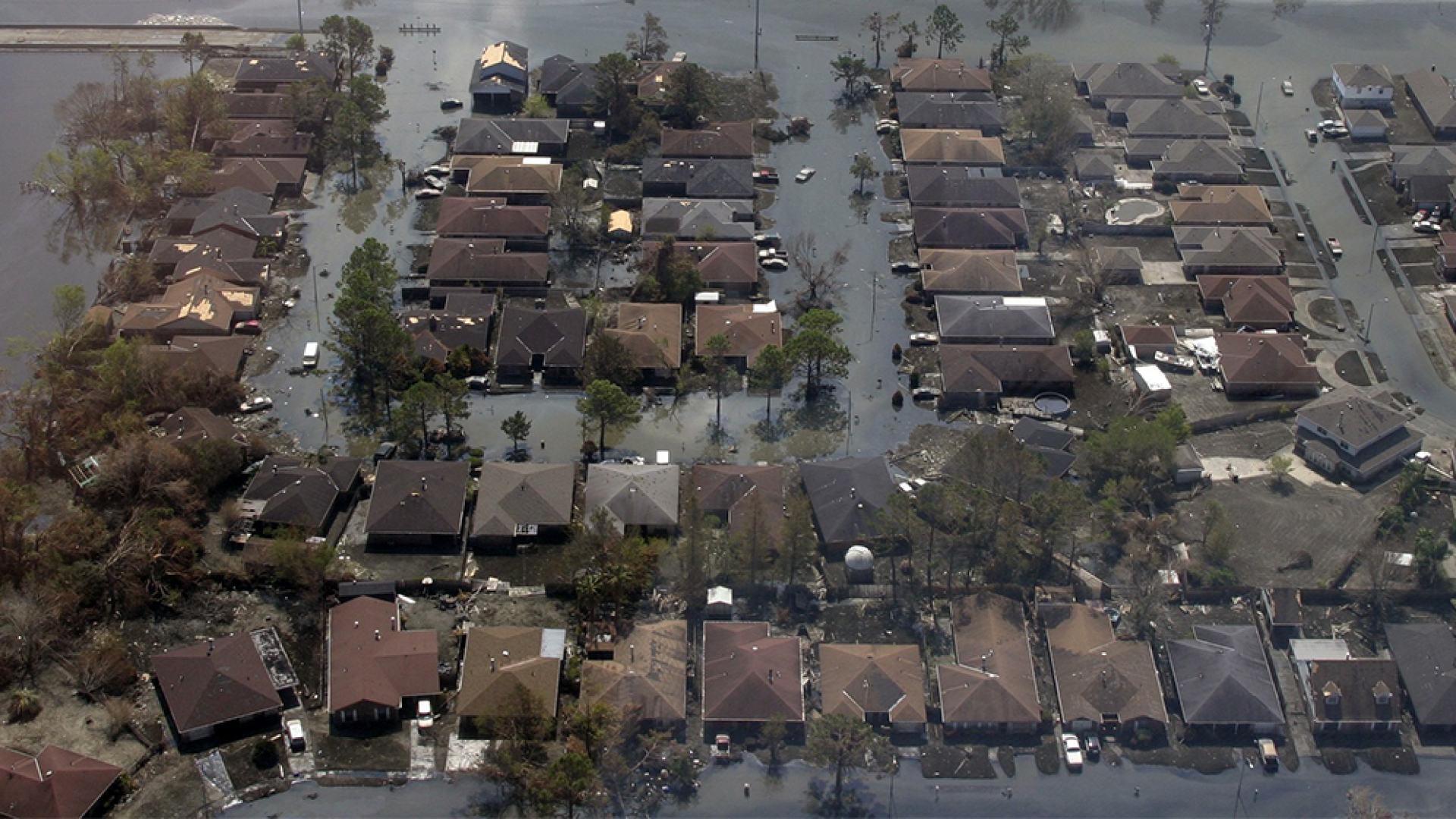How to Care for Your Home After a Flood
The 2017 Atlantic hurricane season saw two Category 4 hurricanes make landfall in the span of a few weeks – a first in U.S. history. Hurricane Harvey in southeast Texas displaced over 185,000 homeowners with massive flooding in cities and communities. Shortly after, Hurricane Irma ravaged the northern Caribbean Islands, damaging over 90% of structures, and then devastated Florida, leaving millions with high waters and no power. It has been projected that it will take years for these regions to recover, and now the 2018 hurricane season has begun, leaving many with the legitimate concern that another large-scale weather event may occur. To assist those who fear the loss of their homes, this article and its listed sources collectively serve as a guide on how to care for your home after a flood.
*Note: If a major flood event has occurred in your area, do not return home until local authorities have assured you it is safe to do so, and your community and the surrounding area are no longer at risk of additional flooding. Your safety and the safety of your family are paramount.
Safety First – Dress Right
Floodwaters can be contaminated with oil, gasoline, household chemicals, and raw sewage, as well as carry a host of bacteria and parasites from swollen river channels, creeks, ponds, and other natural bodies of water. If there is standing water in your home, it is highly recommended that you wear waders, hip- or waist-high waterproof boots, and gloves; avoid touching the water, and thoroughly wash with soap if you do. If the water has receded from your home, and you can walk through rooms without splashing, you still need protective clothing – that means jeans or full-length work pants and a long-sleeved shirt, in addition to closed-toed, waterproof shoes or boots, gloves, safety googles, and a dust mask. A dust mask is essential in the presence of mold to protect your health; mold can cultivate on almost any surface within 24 to 48 hours of a flood and is associated with several respiratory symptoms, allergies, asthma, and immunological reactions. One of your priorities in caring for your home after a flood will be to conduct a mud-out and remove the wet floorboards, drywalls, insulation, and baseboards to eradicate mold and allow your home’s internal structure to air out and dry out before fungal growth spreads; we will discuss the mud-out process in detail later, but it supports wearing the appropriate attire as you begin to restore your home.
Source: The Looming Consequences of Breathing Mold by James Hamblin
Safety First – Assess Damage Outside
Before entering your home, examine the exterior for visible structural damage, such as warping, cracked or loosened foundation, jammed windows and doors – all signs of a potentially compromised structure that may be dangerous to enter. Sometimes there is damage at a non-surface level, beneath the foundation, and your water, gas, electric, and/or sewer lines might be compromised. If you are not sure you can confidently assess the integrity of your home, call in a professional surveyor or engineer to conduct a structural assessment, and contact the proper companies to turn off all utility lines.
Should your home be deemed fit for entry, it is very important that the electrical power remain off when you begin working inside, as a number of flood-related deaths every year are attributed to electrocution by wet appliances or electrically-charged water from underground or downed power lines. Even if the power in your neighborhood is out, it is best not to take any chances. Access your main breaker or fuse box and flip off the main and subordinate fuse connections; this will protect you and others in your home should power be restored to the community. However, if you have to wade through standing water to reach the fuse box, thereby risking electrocution, call an electrician to turn off the connections.
Sources: How Water Damages a Flooded House – And Which Parts Can Be Saved by Steckelberg, Berkowitz, Emamdjomeh, and Neff; Flood Safety Guidelines by the Electrical Safety Foundation International (ESFI)
Assess the Damage Inside – Keep a Record
Now you are inside your home, and the sight is imaginably overwhelming. Depending on flood levels and how long the water occupied your home, the level of damage can be anywhere from significant to devastating. Most flood victims may agree that, second to the home itself, perhaps the most heart-wrenching loss is anything personal (e.g., photographs, letters, home movies) that cannot be replaced with a trip to the store. While such precious mementos are irreplaceable, you can still seek reimbursement for your ruined furniture, appliances, hobbyist collections, clothes, and other belongings, as well as the infrastructure of your home, from the baseboards to the ceiling.
Before you remove any standing water, conduct the mud-out, or start sifting through things to find what is not bound for the curb, photograph (from multiple angles) every room of your home that sustained damage and take pictures of all your spoiled household items; you may even want to record a walk-through video of your home. For insurance purposes, keep a log of everything you lost, noting the approximate value of every item as well as the date of purchase; if possible, collect your receipts for all damaged articles to support your insurance claim. A detailed log of a flood’s impact on your home and personal property will also prove useful in filing applications for disaster assistance and income tax deductions. If/when the water has cleared, use a moisture meter, such as a resistance meter, to measure penetration levels in the foundation, flooring, and walls of your home; this may require drilling exploratory holes to insert a humidity probe, but the accuracy of a moisture meter in identifying where and how severely certain areas and materials of your home were affected by moisture can improve the filing of insurance claims.
Once you have finished documenting all the pertinent details, call your insurance company to set an appointment for an adjuster to come inspect your property. Please note: If your flooding is part of a disaster, like Hurricane Harvey or Hurricane Irma, you cannot be certain the adjuster will come to your residence right away, as there are likely hundreds of homeowners in your situation, all requesting an adjuster come see their homes too; in view of the flood impact and the extent of your claim, it could take anywhere from a week to six months for the insurance adjuster to come examine your property. For this reason, you must communicate with your insurance company the current state of your home and advise on the repairs you intend to immediately carry out because the longer you wait to restore your home, the more its condition will deteriorate.
Source: Moisture Meters – A Critical Tool in Understanding Water Damage by Sper Scientific
Insurance and Disaster Assistance – NFIP and FEMA
It has been estimated that about 80% of Hurricane Harvey victims did not have flood insurance when the storm hit, and in Florida, less than half the state’s homeowners held flood insurance policies during Irma. In truth, the vast majority of American homeowners do not have flood insurance due to heavy costs and lack of availability. A 2016 poll conducted by the Insurance Information Institute revealed only 12 percent of American homeowners had flood insurance that year, a drop from the 14 percent in 2015. Most insurance companies do not even sell these policies because the risks are too great; as a result, homeowners and flood victims turn to the Federal Emergency Management Agency (FEMA) and its National Flood Insurance Program (NFIP) for assistance.
Let’s quickly examine the inner-workings and services of the NFIP and FEMA, respectively. The NFIP is a federal program managed by FEMA to accomplish three tasks: (1) Provide flood insurance to eligible customers, (2) Improve floodplain management in participating communities, and (3) Develop maps of flood hazard zones. Notice the words “eligible” and “participating”: The NFIP works with private insurance companies to sell coverage to customers who live in communities that adopt and enforce floodplain management ordinances, as outlined by FEMA; if your community does not participate in such measures, you cannot buy flood insurance.
FEMA is an agency of the United States Department of Homeland Security that gets involved in flood recovery operations when the president declares an area the site of a major disaster. Disaster assistance from FEMA may include grants for temporary housing; home repair and replacement; uninsured or underinsured personal property; as well as medical, dental, and funeral expenses. Please note: If a major disaster declaration is issued for your area by the president, you may be eligible for low-interest, federally-subsidized disaster loans for your home and business through the U.S. Small Business Administration (SBA); these loans can help with the reparation and replacement of real estate, personal property, machinery, equipment, business inventory and assets impaired by a flood.
*Note: If you are in possession of a NFIP flood insurance policy, this does not prevent you from receiving government aid through FEMA; however, government aid rules reduce FEMA support by the amount the NFIP insures its policyholder.
If you do not have flood insurance, you need to file a homeowner’s insurance claim for damages to receive federal assistance, because FEMA cannot cover the costs of anything your insurance will agree to underwrite. Separate from your claim, you must also fill out a Proof of Loss form, which is a formal declaration to the insurer about the material losses you have suffered, accompanied by solid documentation that supports the amount of money you request from the insurer; this form must be sent to the NFIP servicing agent or Write Your Own (WYO) company within 60 days after the date of loss, or you risk your claim being denied.
Sources: Where do I send my Proof of Loss in support of my Claim? – FEMA; Getting Back to the Basics: What is a Proof of Loss, and What Purpose Does It Serve?; How FEMA Works by Ed Grabianowski; Commonly Asked Questions about Federal Disaster Aid – FEMA; Participating Insurance Companies and Subsidiaries of the WYO Program; How Flood Insurance Works by John Perritano
 Flood Damage
Flood Damage
 High Flood Water
High Flood Water
Removing Water and Mud-outs
After your insurer gives you the green light to mud-out your home, open all the doors and windows to allow fresh air to circulate and remove moisture, as well as alleviate unpleasant odors. Your initial task will be to clear out the flood-impacted spaces of your home; this means removing all the wet furniture, bedding, belongings, and appliances, leaving the rooms empty and ready to be gutted. As you bring your personal property outside, you will need to sort through everything to determine what is or is not salvageable; this will strongly depend upon the level of exposure and extent of time your home was occupied by floodwaters. See “Sources” below for tips on how to dry, disinfect, and save your belongings.
Once the sodden rooms are relieved of all former possessions, it is time to remove the water, mud, and debris. Your methods of doing this may vary. Using a push broom, squeegee broom, and shovel, you can sweep up leaves, dirt, and other flood-deposited rubbish, then simply mop up the wet floors. Removing wet carpets and waterlogged drawers can be simplified with a wet vac powered by a portable generator. Please note: You must never operate a gasoline-powered generator inside your home, as the exhaust contains lethal carbon monoxide; instead, run the generator outside in a well-ventilated area. If you own a home with a basement, and the basement has flooded, but your sump pump cannot operate without electrical power, invest in a hose and submersible pump from the local hardware store; do not run an extension cord from the generator to the sump pump through standing water, or you risk electrocution. You may be able to speed up the basement-draining process by shuttling water out in buckets, but be sure to transport the water away from your home’s foundation, pouring it down the storm drains. Finally, to ensure your floors are dry and pose no slip hazards, work all foot areas over with towels.
All your things are outside, and you have cleaned up the floodwater scum; now it is time to mud-out or gut-out your home. “Gutting out” is a strong, yet appropriate term for the work you are about to do because, keep in mind, your goal is to help your home breathe, so as to prevent additional mold growth and deterioration. You will be tearing out the flooded walls, insulation, baseboards, and flooring to ventilate the interior structure, and while this may seem overwhelming, experts will tell you this measure is necessary, not only for the benefit of your health, but for that of your home and pocketbook. We already discussed the harmful effects of mold on your immune and respiratory systems, but if left untreated, this fungus releases airborne spores to settle on damp, habitable surfaces, thus extending its growth train and further depreciating the quality and integrity of your home’s structure. Adding insult to injury, your damp home may attract all sorts of moisture-loving insects, like termites and roaches, that eat the decaying or dead wood of your home’s framework. In conclusion, it is better to rip out all the inundated surfaces of your home day one of clean-up, then to wait, allowing conditions to worsen, and pay a lot more money for a contractor to remove everything and twice that because of the spread of contagions and vermin to previously intact spaces.
A tip on removing damp drywall: Find the waterline and cut a horizontal line a foot above it with the drywall saw; remove all the drywall below that second line. Water wicks upward, if not through the drywall, through the insulation; you have to remove everything a foot above the waterline to ensure all trace of moisture is gone. Be sure to wear your gloves, safety googles, and dust mask when tearing out the drywall and insulation; you can easily get small bits of drywall in your eyes while hammering, and insulation contains tiny fragments of fiberglass that can get embedded in your bare skin.
Following the gut-out of your floors, drywall, insulation, and baseboards, scrub the now-exposed framework and concrete slabs with non-ammonia soap or detergent to kill any present mold or mildew. Afterward, disinfect these areas with a cleaning solution that is a half-cup of household chlorine bleach added to a gallon of water. Please note: You should never mix bleach and ammonia, as the resultant fumes are toxic.
The final step of the mud-out is allowing your home to dry out, which can take several days, unfortunately. You can speed up the process with portable fans and dehumidifiers, but if you wish to void using the generator to power these appliances, make an appointment for an electrician to come inspect your home’s electrical system. If it is safe to turn the power on, you may be able to use your HVAC system to circulate air throughout your home; however, if the HVAC ducts were underwater during the flood, you need a professional to examine them for water and mold, or you risk poor, hazardous air quality, as mold spores are ejected from the vents into the open rooms.
*Note: For every step of the mud-out, be sure to photograph the changes in your home for your insurance.
*Note: Never work alone. Mud-outs require a lot of physical labor, and it is important to complete the aforementioned tasks in the company of others, not only to accelerate the process, but to maintain a level of safety.
Sources: How to Salvage Your Valuables After Serious Flooding by Mary H.J. Farrell; Cleaning Up After a Flood – with Tips on Your Belongings; How to Pump Water Out of a Basement; Dealing with Mold Problems After a Flood; How to Deal with Pest Control Problems After a Flood by Camille Landry; Removing Soggy Drywall in 8 Not-So-Easy Steps by Roy Berendsohn
Secure the Property
At the end of the day, should you determine your home is not yet habitable, secure the property: Put boards over broken windows; tie tarps down on damaged roof sections; and take your valuables to a storage unit. Collect any important papers on your home, insurance, vehicles, and the like, as well as any photographs you care about, and keep them with you in separate folders.
Additional Sources:
What to Do in the First 24 Hours After a Flood
A Guide on Flooding from the Environmental Protection Agency
Repairing Your Flooded Home – A Guide from American Red CrossCopyright © 2018 Lennar Corporation. Lennar and the Lennar logo are U.S. registered service marks or service marks of Lennar Corporation and/or its subsidiaries.




